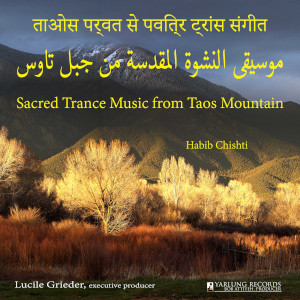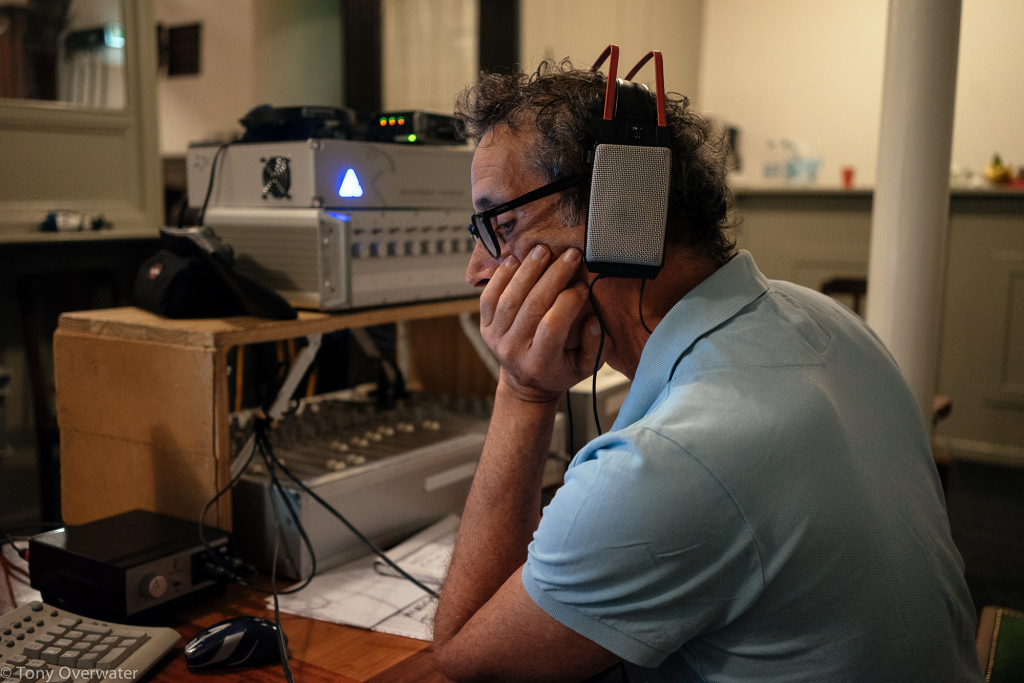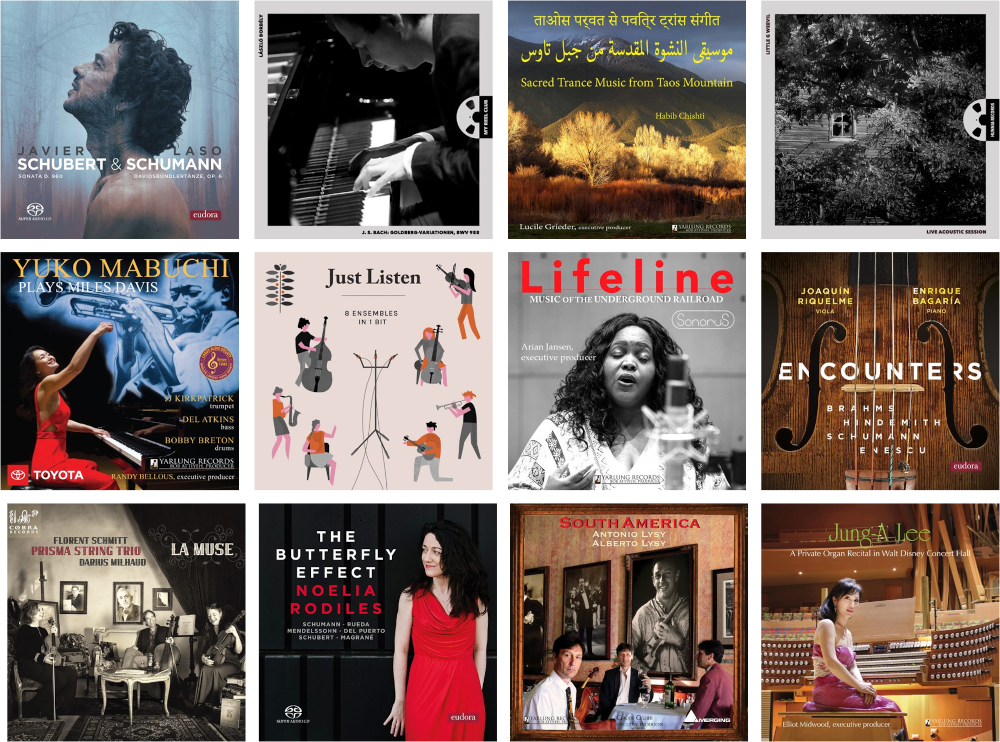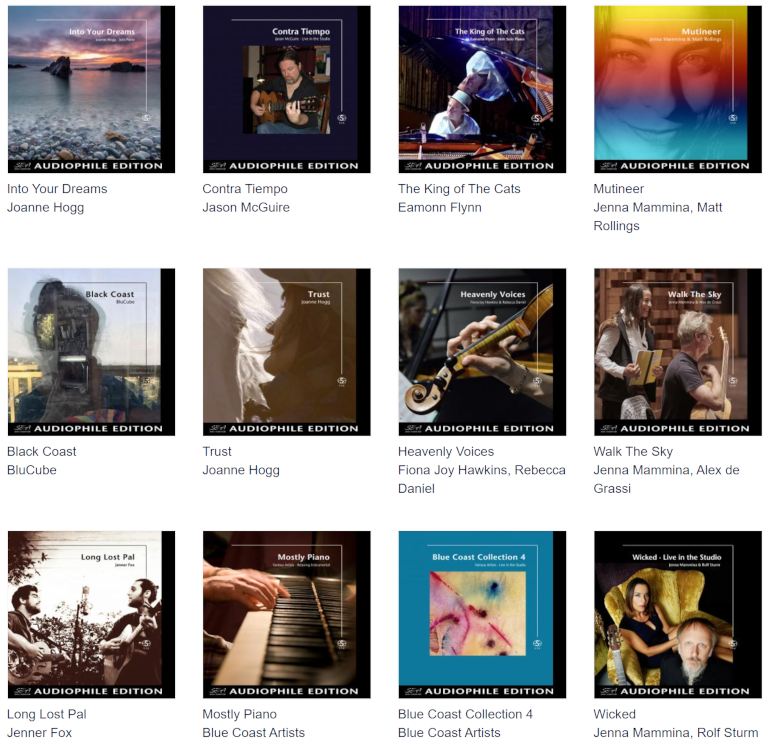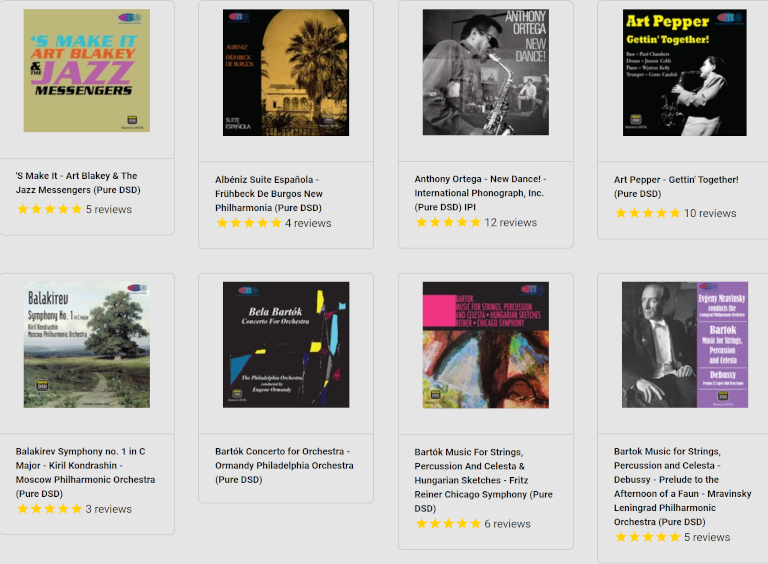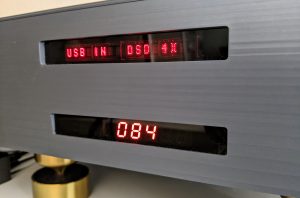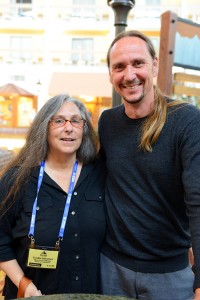Some of you may recall that Ann and I have been on a journey of discovery these past three years. After 45 and more years as died-in-the-wool analog listeners, we moved from an all-vinyl listening system to an all-digital listening system. And as we've explored digital recordings, we've kept our "audiophile-off-the-deep-end" hats firmly in place, seeking the best sound we could obtain. For us, this has meant seeking out high resolution download files.
As you can well imagine, the variables here are as intense and varied as in the analog world. But we have found a digital format with which we are now very comfortable—DSD256. And make that Pure DSD256 if at all possible. By this I mean files that were originally recorded directly to the DSD256 format and then maintained purely in DSD without any conversion to PCM/DXD for post-processing.
For us, higher resolutions (to 24-352 in PCM and to 256 in DSD) offer better and more enjoyable sound, all things being equal. But, being equal is clearly a challenge. The underlying recording quality and the mastering quality will trump higher resolution any day. Higher resolution in a poorly made recording simply lays bare the problems in the recording—no difference from our analog days.
On the PCM side, we found that step-ups in word length and sampling rate provided us enjoyably greater resolution and transparency. No surprise to anyone here, right? We found that once we got to 24-192, things could sound very nice indeed. But our enjoyment of things in the PCM domain really lights up with 24-352/DXD. We've been enjoying DXD recordings immensely. Recordings originally made to DXD by 2L, Pentatone, TRPTK, and Northstar (to name just a few) are simply amazing. I've written about their recordings previously and will continue to do so.
Some folks whose ears we trust report hearing and being bothered by PCM artifacts in DXD. We don't hear this. But, as with many things in our audiophile experience, we simply may not yet have identified the artifact and, so, we remain blissfully unaware (at least for now).
However, for us, DSD256 presents a yet higher level of audio excellence. DSD256 delivers, to our ears, a further degree of ultimate transparency and fidelity to the timbre of the instruments that subtly elude DXD.
Cookie Marenco's Blue Coast Records recordings gave us a window onto what Pure DSD recordings could do for our enjoyment of music: transparency, dynamics, and truth to the natural timbre of the instruments. Her recordings in DSD educated us about what could be possible. Those who today value DSD recordings owe a great debt to Cookie. She challenged and pressed the recording industry as a champion for DSD when few others were paying proper attention. Her recordings are fully DSD, and where mixing has been required that could not be accomplished in the DSD domain, she transferred to high resolution analog tape (1", 30 ips, in many cases) to complete her editing, and then transferred from analog tape directly to DSD once again.
Cookie Marenco of Blue Coast Records
And we also found the supremely well recorded Yarlung Records recordings a shining signpost of the possible. Bob Attiyeh has long been a favorite recording engineer and producer in our home. We found great pleasure in his analog recordings on vinyl. To my delight, we found that NativeDSD provided DSD256 file downloads from the Yarlung catalog, both direct transfers from the analog tapes and originally recorded DSD256 files. For these DSD256 releases, as with his analog tape recordings, Bob has maintained his purist philosophy: keep the processing chain as direct and simple as possible, using the best possible equipment, and no PCM editing. The results are gloriously transparent and lifelike.
But our principal love is for classical music, and in this genre it has been difficult to find recordings that have not been post processed via DXD. Because of the complexity of recording classical music, the standard for both recording and for post-processing became DXD. The DXD edit master was then used to transfer to whatever formats the producer wished to supply to the market. (Of course, the major labels are unfortunately lagging behind. Many of the majors are only interested in the mass market and continue to think 24-96 is a completely adequate resolution. Ugh.)
Classical music download files labeled as "DSD 256" are almost invariably transfers from DXD edit masters, not Pure DSD 256. This has been so even where the technical specifications for the recording proudly touted "original recording format: DSD 256." Indeed, all true. But a trip through DXD was required to mix, balance and make the final edits to the recording.
Some labels (e.g., 2L, TRPTK, Northstar) record directly to DXD because they know they will do the final mix in DXD in any event. Why have yet another conversion step? Some other labels (Channel Classics, Cobra Records) record to DSD256 but then convert to DXD for post processing—stated frequently to be a necessary step for the editing/mastering process given the state of the technology.
Jared Sacks, founder and chief recording engineer for Channel Classics, has long been a proponent of DSD and was an early adopter of SACD. Hundreds of his recordings were made in DSD64 because he was releasing on SACD physical media. Today he records to DSD256 and releases CD, SACD and high resolution download files in DSD64/128/256/512. But, his recordings go through DXD for editing/mastering and the DSD files come from the DXD edit master, so they are not Pure DSD even though they are marvelous.
When I asked Jared about this, and asked why he doesn't record directly to DXD if he has to do the final editing in DXD anyway, his answer was succinct: DSD 256 sounds better. He has a library of DSD 256 original files that he hopes new technology developments will one day allow him to remaster in the DSD domain. He said he'll then be able to reissue his catalog in even better sound quality. Something to look forward to, indeed!
Jared Sacks of Channel Classics
But the technology for mixing and editing in DSD without DXD is emerging rapidly. I've written about recordings from Yarlung and new recordings from Eudora Records that are Pure DSD: recorded, mixed, and balanced purely in DSD. Cobra Records has also recently released an album in Pure DSD. These recordings are using the Signalyst HQ Player Pro 4 mastering tools to do all final mixing and balancing in the DSD domain without the use of DXD.
Eudora Records releases in Pure DSD256 as of the writing of this article in May of 2021
Why are Ann and I excited about Pure DSD and our increasing ability to download Pure DSD256 files? Well, they just sound better. There is a transparency that I don't hear in PCM, as good as DXD files can be, the Pure DSD256 files just sound closer to the music and the artists to my ear—there's less in the way. (Ann may describe her experience a bit differently, as is often the case in our listening together.)
Coming full circle, what file format do we download given the opportunity to choose? I follow Andreas Koch's advice and always seek to download the format that is closest to the edit master. It has been touched the least by stages of processing. As Andreas points out, every stage of processing leaves some artifact. It is mathematically impossible for it not to do so. For us, this means that if the edit master is DXD, I will download the 24-352 DXD file if it's available—even if the file is available in DSD256 and was originally recorded in DSD256. If the file is available as a Pure DSD file, oh my, yes. That is the file I would like to have.
But, this is not always the best action. It depends on your DAC. As I've commented elsewhere, it is important to do some comparative listening with your own equipment. For some, the best file may be the file that has already been commercially processed into the format your DAC will most easily process with the best resulting sound quality.
So, where can you find some Pure DSD recordings?
At NativeDSD, select their Pure DSD Product Tag for their catalog. Below are some of the titles that are Pure DSD (some have not yet been tagged as such). I've been told that Eudora Records has another Pure DSD title in the works that will be released soon.
At Blue Coast Music, select Blue Coast Records as the label, then select DSD as the format, like this. The first twelve of over 60 albums that appear to be Pure DSD (you should verify the Provenance shown in the right hand margin for each album):
Pure DSD files from High Definition Tape Transfer (HDTT) are transfers from analog tape. They are listed as Pure DSD because the transfer from the source analog tape is directly to DSD256 via the Merging Technologies Horus A/D converter, with no further processing and no PCM filtering or editing. Bob Witrak has been doing a marvelous job with these DSD256 direct transfers. These are as transparent, neutral and pure as once might imagine. You hear the tape as if playing on your own high resolution reel-to-reel deck, and, as such, you may also hear some of the tape imperfections that Bob deemed a reasonable tradeoff. Only the cleanest tapes HDTT has access to will qualify for a Pure DSD direct transfer. Tapes that need a bit more help get transferred first to DXD for editing. Here are the eight of over 150 Pure DSD albums from HDTT's catalog:
I'll be writing more about Pure DSD recordings as I find them. If you know of Pure DSD albums from other labels, please tell us in the comments.





